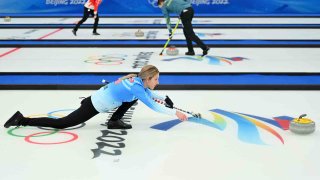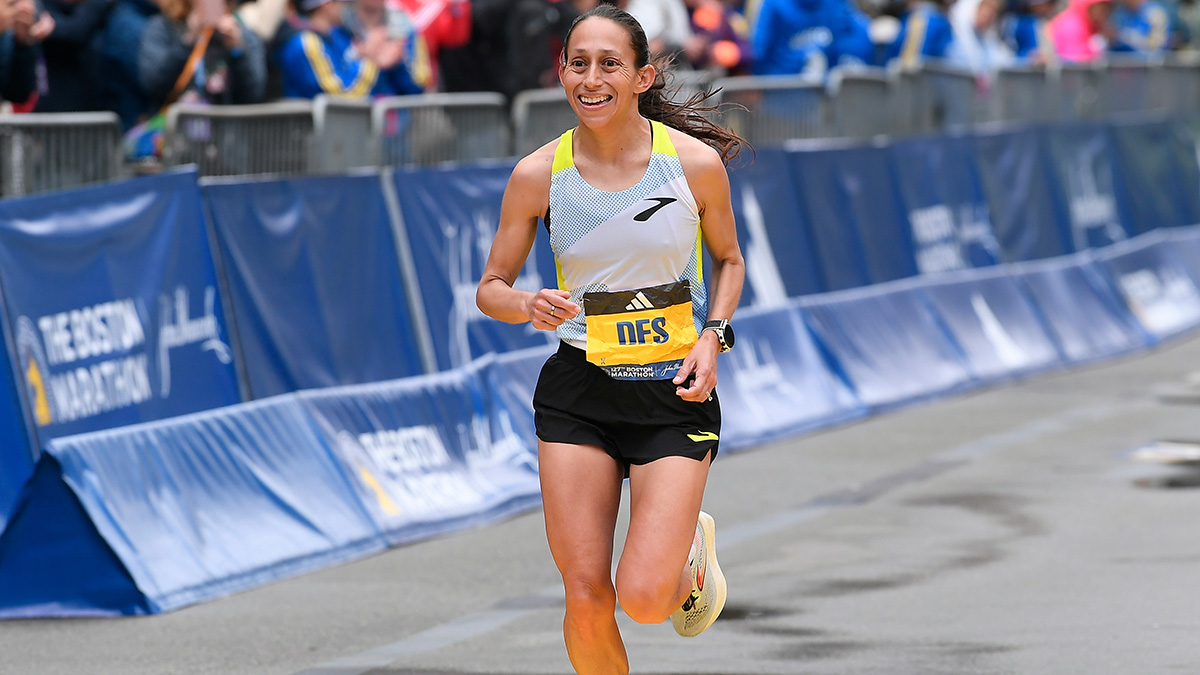
It’s known as “chess on ice.”
Curling, like chess, is a game of battling for position and strategically outmaneuvering the opposition. Unlike chess, it involves sliding large rocks down a sheet of ice and sweeping.
Yes, sweeping plays a crucial role in this Olympic sport.
Stay in the game with the latest updates on your beloved Boston sports teams! Sign up here for our All Access Daily newsletter.
A sport that John Shuster and the United States men’s team captured the country’s first gold medal in during the 2018 Winter Games, defeating Sweden in a stunning victory.
Ten men’s teams and ten women’s teams, along with ten mixed doubles teams, will compete for gold in Beijing. Each team plays against one another in the preliminary round, and the teams with the four best records advance to the semifinals.
Here’s everything you need to know about how the sport began, how it’s played and how to win.
What are the rules of curling?
Olympic Sports
Two teams of four players each look to outscore one another by pushing a roughly 42-pound stone on a sheet of ice measuring 46 meters long (150 feet) and five meters wide (16 feet, five inches).
A game consists of 10 ends (think of it as an inning in baseball).
Each player delivers two stones for a total of eight per team in each end. The order of delivery is predetermined, starting with the lead (who typically specializes in placement), the second (often used to block), the third (used to take out opponents’ rocks) and the skip (the team’s captain and generally the most skilled and vocal player).
Players start from a rubber block called a hack. They slide forward while pushing the rock, releasing prior to what’s called the hog line. Releasing a stone after it has touched the hog line results in a violation and the stone is removed.
Players aim for a circular target of four concentric circles called a house, the scoring zone that’s similar in appearance to a dartboard, situated 93 feet away.
At the center of the house is what’s referred to either as the button or tee, which is what players looking to score are attempting to place the rock closest to.
The ice is a pebbled surface. Up to three players can sweep the ice while the rock is in motion to impact the speed and direction, but touching the rock with a broom or foot while doing so results in a violation. That gives the opposing skip multiple options, including returning the affected stones to their original position or leaving them as is if deemed beneficial.
Stones that hit the sides or go past the house are disqualified.
How does scoring work in curling?
The concept is simple: score more points than the other team.
Only one team scores in each end, with scoring based on stones located in the house. The team with the stone closest to the button is awarded one point. Additional points are earned for other stones that are closer to the button than any opposing stone.
A losing team can concede after six ends have been completed. If a game is tied, it goes to extra ends.
The last stone thrown in an end is called the “hammer.” The team that fails to score in an end gets the advantage of having the hammer in the following end.
What is the equipment used in curling?
The most crucial is the curling stone that gives the sport its name.
The gray, polished granite stones must weigh between 38 and 44 pounds. They are topped with red or yellow handles used by players to either turn it clockwise, which will curl the stone to the right, or counterclockwise, which will turn the stone to the left.
It may seem like players are wearing ice skates to glide down the ice, but they are not. They wear curling shoes that grip the ice well and allow for a sliding motion. Slippery surfaces such as Teflon are used on the sliding foot while shooting.
Most brooms used at the Olympic level have synthetic bristles.
What is the history of curling?
Curling was developed in the 16th Century in Scotland, the Netherlands and possibly Belgium. The first recorded match took place around 1541 when John Sclater, a Scottish monk from the Paisley Abbey, challenged Gavin Hamilton, the lay governor of the abbey.
The men’s curling tournament was played at the original Olympic Winter Games in 1924, with Great Britain winning gold, though the results of that tournament were not officially recognized by the IOC until 2006.
The men’s tournament returned to the Olympic program as a medal sport in 1998, the same year the women’s tournament debuted. Mixed doubles in curling made its Olympic debut in 2018.
Which country has the most medals in curling?
Canada has dominated in curling at the Winter Games, though the country is coming off a disappointing showing by its standards in 2018.
Entering the PyeongChang Games, Canada had medaled in every men’s and women’s tournament since curling returned to the program in 1998. All combined, the Canadian teams own the most gold medals in curling with six and the most medals overall with 11 (three silver, two bronze). In 2018, Canada had its worst finish in both the men’s (fourth) and women’s tournament (sixth), but did win gold in the inaugural mixed doubles tournament, with Switzerland taking silver and Norway taking bronze.
Sweden has the second most medals in curling with eight (three gold, three silver, two bronze), including the only consecutive gold medals in the women’s tournament (2006 and 2010). Great Britain is third with four (two gold, one silver, one bronze).
The United States owns two medals in curling, with the men’s team taking gold in 2018 and bronze in 2006. The U.S. women, which finished eighth in 2018, had its best finish in 2002 when the team took fourth.


